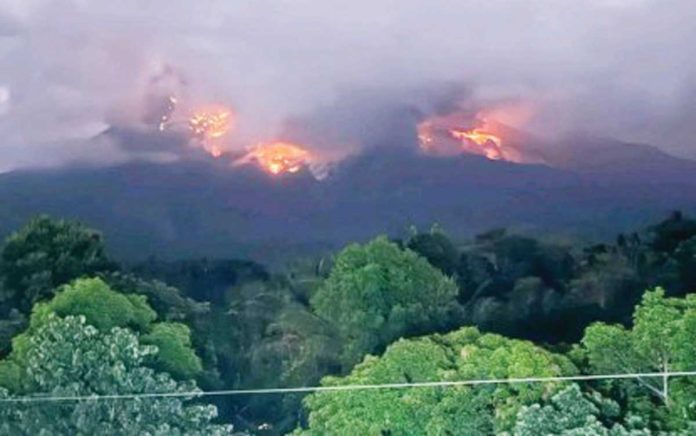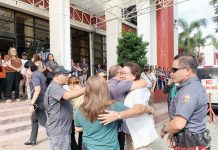
NEGROS Occidental – A five-minute moderately explosive eruption occurred at the summit crater of Mount Kanlaon at 2:55 a.m. yesterday, the Philippine Institute of Volcanology and Seismology (Phivolcs) said.
This generated a grayish voluminous plume three kilometers above the vent.
Thin ashfall was reported in barangays Cubay, San Miguel, Yubo, and Ara-al in La Carlota City; Ilijan and Binubuhan in Bago City; and Biak-na-Bato, Sag-ang, and Mansalanao in La Castellana, all in Negros Occidental.
Audible rumbling sounds of the eruption were reported in Barangay Pula, Canlaon City, Negros Oriental and La Castellana.
Incandescent pyroclastic density currents (PDCs) descended the southern slopes within two kilometers of the crater. PDC is a hazardous volcanic phenomenon characterized by fast-moving, ground-hugging hot gas flows and volcanic debris.
“Large ballistic fragments were also observed to have been thrown around the crater within a few hundred meters and caused burning of vegetation near the volcano summit,” Phivolcs added.
Alert Level 3 (magmatic unrest) still prevails over Kanlaon. This means the volcano is in a state of magmatic unrest, with increased chances of short-lived, moderately explosive eruptions that could generate life-threatening volcanic hazards.
Phivolcs said it was recommended that communities within a six-km radius from the summit crater remain evacuated due to the danger of PDCs, ballistic projectiles, ashfall, rockfall, and other related hazards.
Communities that experience ashfall are advised to take all necessary precautions and use protective masks or a wet cloth to prevent ash inhalation, with special attention given to vulnerable persons, including the elderly, persons with respiratory or cardiovascular diseases, pregnant women, and infants.
“Local government units must continue to prepare their communities within the PDC hazard zone for subsequent evacuation in case unrest further escalates and hazardous worst-case explosive eruption becomes imminent,” said Phivolcs.
Increased vigilance against potential syn-eruption lahars and sediment-laden streamflows in channels draining the edifice is strongly advised should intense rains occur during eruptive unrest.
Aviation authorities must advise pilots to avoid flying close to the volcano’s summit as ash from any sudden eruption can be hazardous to aircraft.
DSWD checks on evacuees
Personnel of the Department of Social Welfare and Development (DSWD) Region 6 immediately visited the evacuation centers in the Negros Island Region (NIR) to check on the condition of the evacuees.
“Immediate response, in any type of disaster or emergency, is crucial. And to think of it, this is even more needed by our Mt. Kanlaon evacuees who have been displaced for almost five months now. We have to assure them that we are looking after their needs,” Assistant Secretary Irene Dumlao of the DSWD’s Disaster Response Management Group (DRMG) said.
Based on records, there are 1,763 families or 5,678 individuals from La Castellana town and the cities of La Carlota and Bago who are currently staying in evacuation centers.
Dumlao said that ahead of the latest eruption, the agency had over 267,000 boxes of family food packs (FFPs) and PHP98 million worth of other food and non-food items (FNFIs) prepositioned in DSWD in Western and Central Visayas. (PNA)







